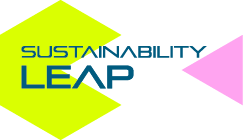Sustainability Leap is a platform provided and maintained by the Finnish Environment Institute (Syke) to present and disseminate climate, circular economy and nature solutions.
It is an open, permanent and free service for all actors: municipalities, companies, organizations, residents, parishes, research projects, etc.
The purpose of the service is to gather progressive practices into a single service, so that different actors do not have to use resources to build and maintain their own separate services.
The service is for effective measures that clearly contribute to climate change mitigation, circular economy and halting the loss of biodiversity.
The service publishes only implemented measures, not ideas, goals, declarations or project presentations.
The measures published by companies must be implemented, concrete reference points. General company presentations will not be published.
At its own discretion, Syke maintains the right to add or accept case examples deviating from the Leap criteria, if they are otherwise deemed suitable for the platform and seen to advance sustainability goals.
SYKE has created criteria for the contents of the service and checks all content before publishing. It also reviews the contents of the service annually and may remove outdated examples. Previously accepted content may also be removed, if information arises in light of which the case example is no longer seen to fulfil required sustainability criteria.
Criteria for Climate Leaps
A climate leap is a measure that has a significant impact on reducing emissions.
The measure must be one that can be replicated: this way the example has wide potential for reducing emissions beyond the realised project.
The measure is cost-effective and can be implemented on market terms.
Information is available on the measure. The climate leap includes, as a minimum, information on what was done and what the emission reduction effect of the measure was. More detailed information on, for example, the size of the investment, the repayment period, and energy savings increases the marketability of the leap.
A climate leap can be an action to reduce emissions in various sectors, such as transport, energy production or agriculture.
The climate leap should also take into account the carbon sink effects of the measure– a measure that significantly reduces emissions and is considered to be a climate leap, cannot be a measure based solely on the utilisation of forest biomass. The harvesting of forest biomass always reduces the forest’s carbon stocks.
In principle, energy production based on burning, such as bioenergy, is not considered a climate leap, unless it is an efficient hybrid solution with the focus on other heating methods.
Wood as a building material does not alone make an operation progressive. Buildings with wooden frames must be very energy efficient, at least 40% more energy efficient than Class A buildings.
Criteria for Circular Economy Leaps
A circular economy leap is an act that promotes circular economy. A circular economy leap is a measure that significantly reduces the consumption of natural resources directly or indirectly, for example
- by increasing reuse, remanufacturing, repair and recycling;
- by avoiding and reducing the amount of waste generated;
- by promoting the longevity of things;
- by promoting sharing economy, i.e. the rental, lending or sharing of things;
- by reducing the consumption of things
The idea of circular economy includes the notion of economic activity, the revenue model of which is linked to the preservation of the value of materials, services and various solutions for the sharing economy.
A circular economy leap may, for example, be about the development of services or products or about economically viable, material-efficient operating models.
A successful circular economy leap can, for example, create new jobs, bring new resource-saving commodities to people or increase their well-being, quality of life and health.
Successful and impressive circular economy leaps are also characterised by their progressiveness, novelty value, scalability, enthusiasm and replicability.
The circular economy and the reduction of climate emissions, on the one hand, and the preservation of biodiversity and human well-being, on the other, are almost always linked. In the best circular economy leaps, no area has been neglected at the expense of others, and these opportunities for cross effects have been identified and taken into account.
Criteria for Nature Leaps
A nature leap is a measure that aims to stop the loss of nature. A good nature leap reflects the municipality’s new kind of principles, for which a background is provided and where the project’s decision-making process, costs, measures, nature benefits and communications are outlined.
A nature leap is a measure that
Maintains or significantly preserves biodiversity in the long term
- Establishes, for example, a Metso or Helmi protected area
- Implements, for example, ecological compensation
Improves the state of biodiversity
- Restores, for example, wetlands, swamps or small water bodies
- Establishes, refurbishes and maintains a meadow
- Increases the amount of decaying and retention trees in municipal forests and helps save old and large deciduous trees from felling
Leads to action that takes nature into account or to a change in lifestyle that is sustainable from the point of view of nature
- Takes biodiversity impacts into account when making procurements
- Communicates the rehabilitation of running waters or the benefits of biodiversity to the inhabitants of the municipality
- Communicates the benefits of a vegetarian and fish-focused diet and supports organic food production
Promotes human well-being and health in relation to natural recreational and cultural services
- Helps build a memorable nature trail
- Helps set up guide boards at valuable natural sites that raise awareness of the importance of biodiversity for human well-being and the public economy
- Helps protect nearby natural sites through land use planning or conservation
